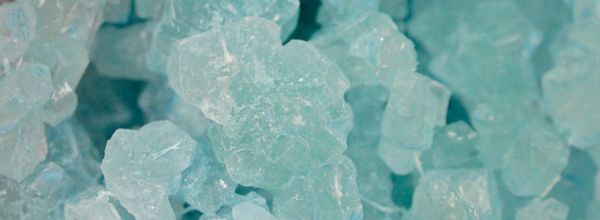Like most other chromatographic techniques, thin layer chromatography (TLC) separates out individual compounds from a mixture depending upon the polarity of each compound. The solvent system travels up a silica plate by capillary action and passes over the sample that you spot onto the plate. As the solvent travels up, it moves the compounds present in the sample at different rates depending on their polarity, thus separating them from each other.
It sounds like a simple process, but there are some basic principles and knowledge you should acquire before you perform your first experiment.
How it’s Done
You can perform TLC on plates that are the size of a glass microscope slide or larger, depending on the number of samples to be analyzed. You can prepare the plates in the lab using glass slides, by applying a thin layer of silica gel. Alternatively, you can purchase commercial, ready-to-use TLC plates that are prepared on an aluminum base (instead of glass slides). Commercial plates tend to give better results due to uniform thickness across the plate.
Once the TLC plate is ready, you draw a line using a pencil and a scale, approximately one centimeter from the base of the plate. Apply a small spot of the sample to be analyzed on the center of the line. Be careful: the spot must remain above the level of the solvent system when you insert it into the solvent chamber.
Before inserting the plate into the chamber, saturate the chamber with the solvent vapor by pouring the solvent in the chamber and keeping it for at least 20-30 minutes. To ensure proper saturation of the chamber, you can also place a filter paper soaked in the solvent system on the wall of the chamber.
After saturation is complete, place the TLC plate vertically (sample spot down) in the chamber. The solvent will run up the TLC plate by capillary action carrying the compounds with it.
Rf Value and its Significance in TLC
Rf value is the ratio of distance traveled by the compound to the distance travelled by the solvent, and ranges between 0 and 1. Every compound has a signature Rf value, allowing you to separate and identify them. Generally, you aim to obtain Rf values ranging between 0.3 and 0.7, as they give better resolution.
The Rf value strongly depends on the nature of the adsorbent and the solvent system used. For this reason, experimental values can differ from those reported in the literature. Therefore, when you are using TLC to determine the identity of an unknown compound, it is essential to run the sample and standard on the same TLC plate at the same time, and if possible, at the same concentration.
Spotting the Spot
If the sample that you run on the TLC plate is colored, you can visualize it directly after the run. But often the sample is colorless. Therefore you will need to choose an appropriate technique to visualize the spots after TLC, depending on the structure of the molecule you are analyzing.
Some commonly used techniques are:
UV (Ultraviolet) Visualization
Some compounds, like several polyphenols, naturally fluoresce under UV light. Therefore, you can easily visualize them on the TLC plate with the right lighting.
Alternatively, you can impregnate TLC plates with fluorescent compounds to visualize samples containing compounds that absorb UV. For example, benzene derivatives absorb UV at 254 nm and appear as dark spots on the TLC plate because they quench the fluorescence.
Acid Treatment
You can use an acid treatment of the TLC plate to develop spots that contain organic compounds. Usually, you spray the plate with acid, but you can also dip the TLC plate in acid for a few seconds using tweezers. Once the treatment is done, you air dry the plate and then heat it on a hot plate (or in a hot air oven) to develop brown spots.
Iodine Vapor Treatment
Compounds containing C=C bonds will appear after exposure to iodine vapors. After the TLC run, just dry the plate and pop it into a jar with iodine vapors.
Vanillin Stain
Vanillin is used to detect alcohols, aldehydes and ketones, and you will see a range of colors after heating.
Ninhydrin Treatment
You can use a ninhydrin solution to detect amino acid samples on TLC plates.
You can find recipes for these developing reagents easily on the internet, although they might vary slightly depending on the compound to be analyzed.
All things considered, TLC does require effort and perfection, and surely is a fundamental analytical method. In my next article I’ll throw light on the important uses of TLC. So hold your horses till I get back with my next article.






